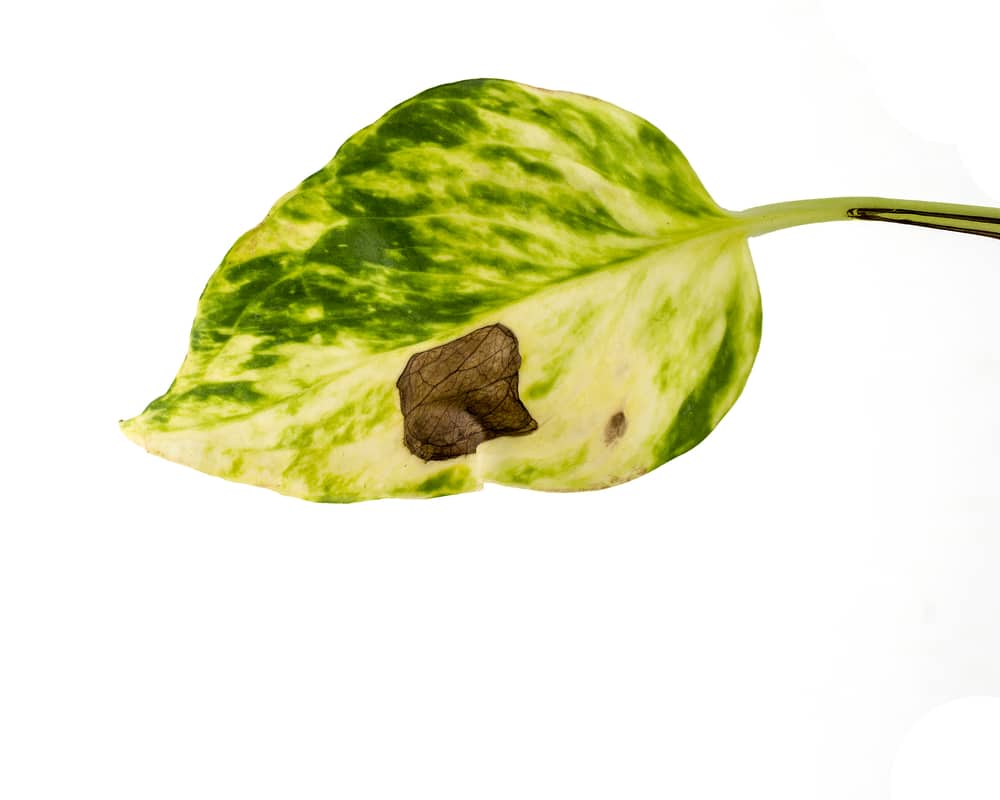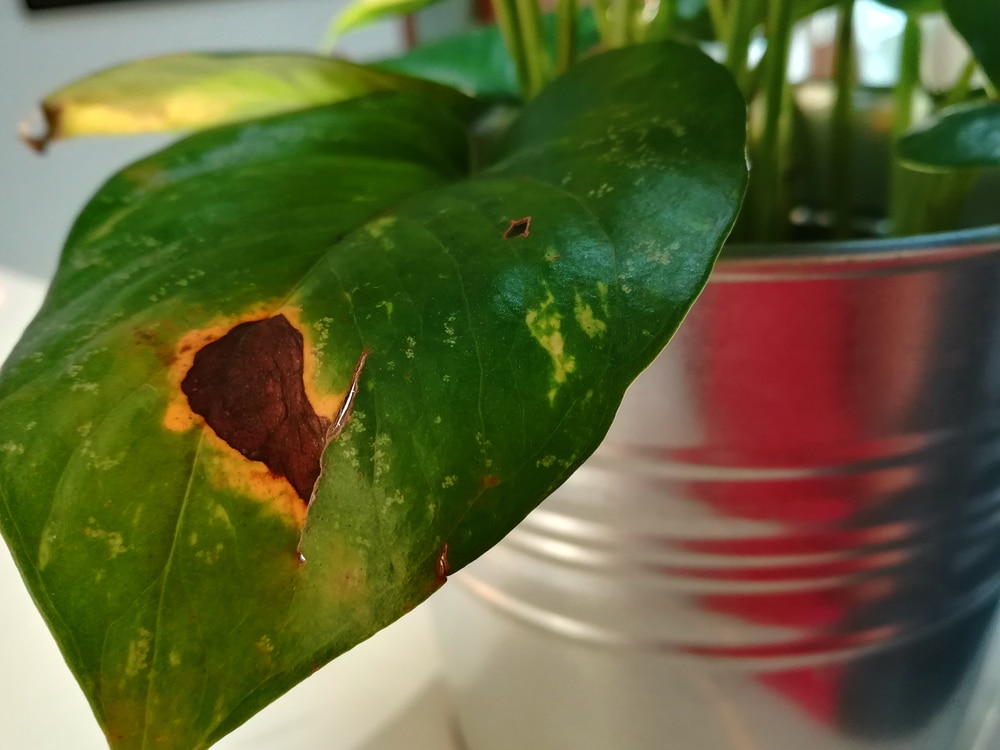It’s easy to assume that the only thing that gets sunburnt are people. That couldn’t be further from the truth, however. Everything from animals to plants runs the risk of injury by being exposed to the sun for too long, and pothos is no exception. Pothos sunburn is relatively common; you may have noticed it on your plant.
So how do you protect your progress from sunburn, and what should you do if it occurs? Below you will find your options for dealing with this inconvenience and how to prevent it from happening.
Why Sunburns Occur
It may seem evident that sunburns happen due to exposure to the sun, but this is an oversimplification. Specifically, exposure to UV rays is what causes burns. UV rays aren’t like your average light waves. They are a type of radiation, and radiation can have powerful effects on living organisms.
Indirect sunlight is unlikely to cause a pothos sunburn. That doesn’t mean the area should be dark, but your pothos doesn’t need light to fall directly on the leaves for very long.
Symptoms of Sunburns on Pothos
Spotting a sunburn is reasonably straightforward. The leaves will become discolored, starting with bleached patches on the leaves. These can appear yellow or white. Over time, the patches will grow and fade to brown.
One way to distinguish sunburn from other issues is the placement of the discoloration. Sunburnt pothos will generally display symptoms on the top of the leaves.
If you leave it untreated, the leaves will wither, die, and even develop holes.
Preventing Sunburns
Preventing sunburns on plants is fairly straightforward. Just as you would for people or animals, you should limit your plant’s exposure to direct light. Pothos thrive in bright, indirect sunlight. You can keep your pothos in a sunny room or on a well-lit porch.
If you live in a warmer climate where your pothos can live outside year-round, try keeping them in a shaded area where other plants can protect them. Remember that this plant is toxic to pets, so you should keep it out of their reach.
If you notice your pothos showing signs of sunburn, you should start by moving the plant away from light sources. It may be getting too much sunshine through the window at a time you wouldn’t notice. While you are gone at work, the light may come into your house at different angles.
If your plants are outside and cannot be moved, you can shade them with a cloth and water generously. Adding mulch can be helpful as well. Mulch can keep the plants cool and help the roots retain moisture.
Keeping plants that have not yet matured in a greenhouse is also an excellent way to prevent sunburn. Greenhouses filter out dangerous UV rays without eliminating the light source. Greenhouses are also great for
- Stabilizing temperatures
- Retaining moisture
- Protecting from pests
Treating Sunburns on Pothos
Plants can usually recover from sun damage. You would have to forget about them for quite some time before they reach the point of no return.
Treating these plants is easy. Removing dead leaves is the first step, followed by plenty of water and protection from further exposure. Unfortunately, leaves that have turned brown won’t be able to return to their original color. Over time, however, new growth should appear.
Final Thoughts
A sunburn plant can be highly distressing, but it is easy to remedy. Unless the damage to your plants is extensive, you shouldn’t have any trouble reviving them.
Do what you can to protect your plants from harmful UV rays by setting up a shade or moving potted plants to shaded areas. As long as thoughtful steps are taken, treating and avoiding future sunburns should help your plants live happy, healthy lives.

